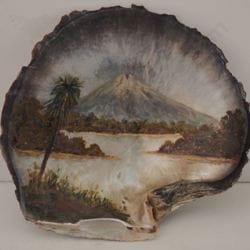“It has been commonly thought that the best way to predict future earthquakes is to analyse the earthquake histories of individual faults,” says Associate Professor Lamb. “Data about past earthquakes are entered into modelling software and used to predict future earthquakes on each fault. This method assumes that each fault has its own in-built pacemaker or driving mechanism, giving rise to semi-regular earthquakes on the fault.”Associate Professor Lamb thinks there are a number of issues with this method.“It is impractical to characterise every fault — there are just too many and some are not visible at the surface,” he says.But a more fundamental issue with this method was revealed by analysis done in conjunction with Associate Professor Richard Arnold of Victoria University of Wellington and Dr James Moore at the Nanyang Technical University, Singapore. Associate Professor Lamb says the team’s work showed that, in most cases, the earthquakes that happen on faults are triggered by earthquakes on faults elsewhere.To come to this conclusion, the team looked at the slow movements of the landscape in the two decades prior to the 2016 Kaikōura earthquake, measured very precisely with satellite mapping of ground motions.“We found that the measured ground motions were caused by slippage only on the single major fault separating the two tectonic plates that lie under New Zealand. This large fault, called the megathrust, underlies much of New Zealand, and only reaches the surface offshore.”The megathrust moves freely at depths of 30 kilometres or more, but at shallower depths it is locked in place. This combination of steady movement in some places and no movement in others slowly forces the southern North Island and northern South Island to bend like a piece of elastic. Associate Professor Lamb says that this movement puts extreme stress on the landscape, and that this was the cause of the 2016 Kaikōura quake. “The Kaikōura earthquake initiated a complex pattern of fault movement, essentially shattering the landscape, and causing a cascade of earthquakes on 20 or more faults,” Associate Professor Lamb says. “The data we studied show a strong link between the pattern of shattering and locking of the underlying megathrust prior to the earthquake and the movement during the earthquake itself. The damage caused by the Kaikōura earthquake runs parallel to this locking of the megathrust, but cuts across many of the big surface faults in the area, indicating a strong link to the movement of the megathrust rather than any of the individual faults.”These findings may be significant for the way we predict future earthquakes, Associate Professor Lamb says.“While we may not be able to predict the movement of individual faults, we can track the underlying cause of an earthquake and give an indication of where future shaking might occur by understanding and modelling the megathrust.”



